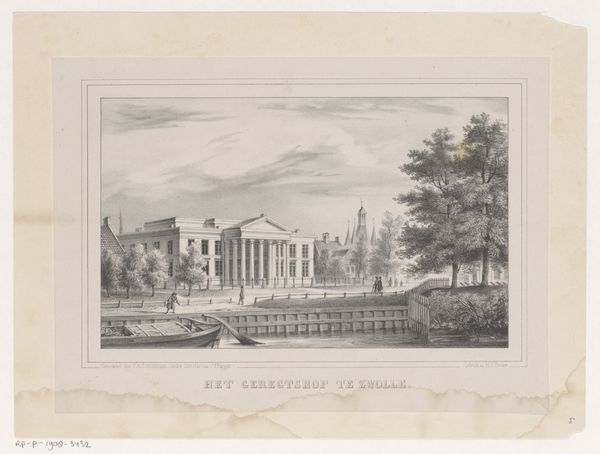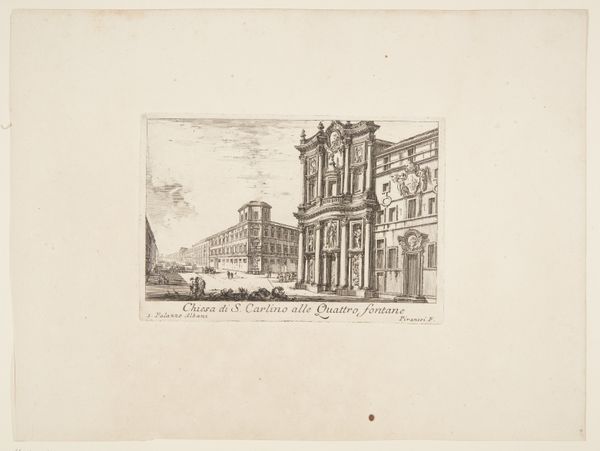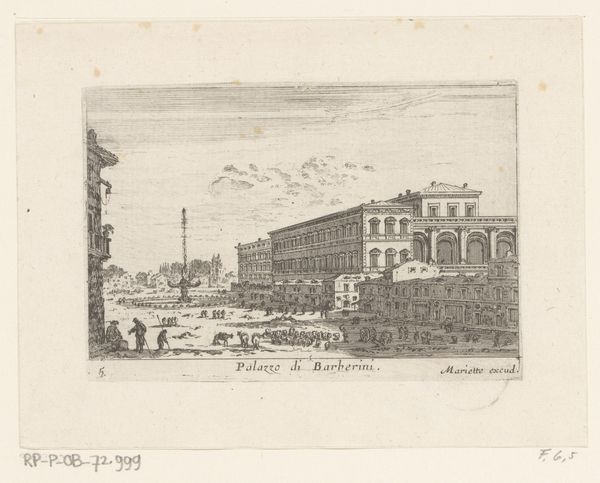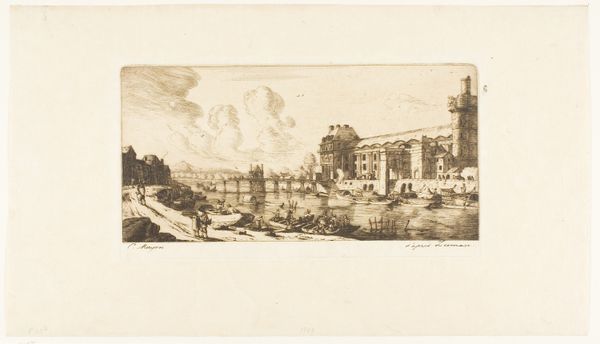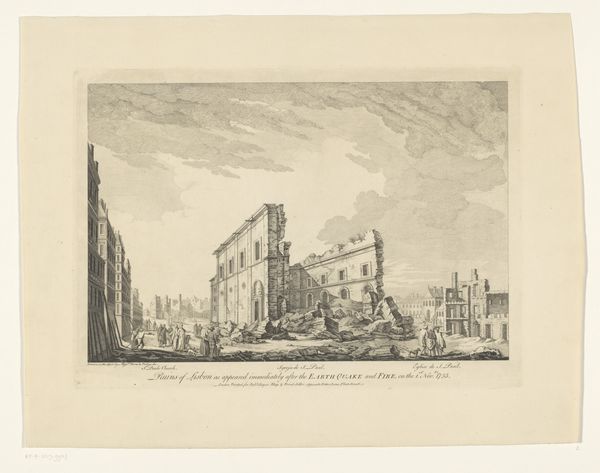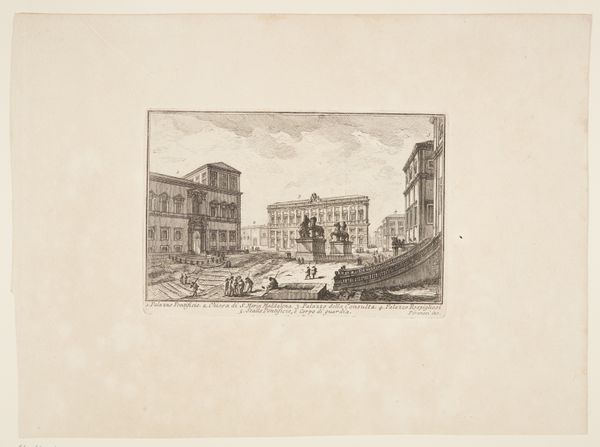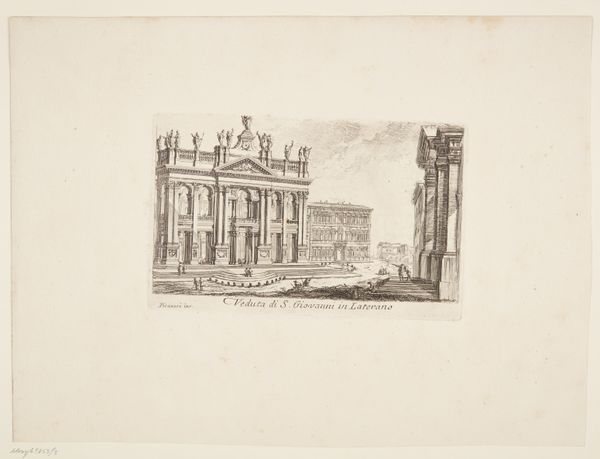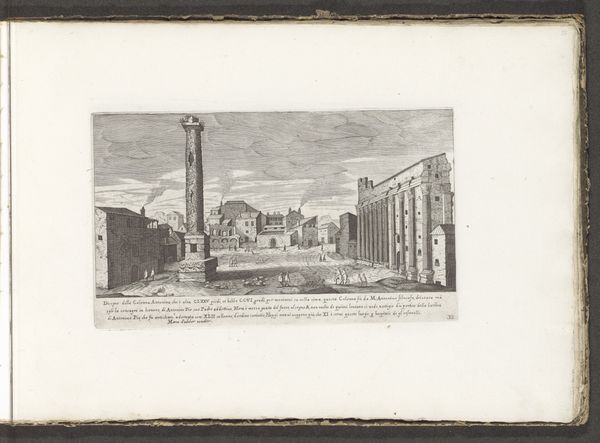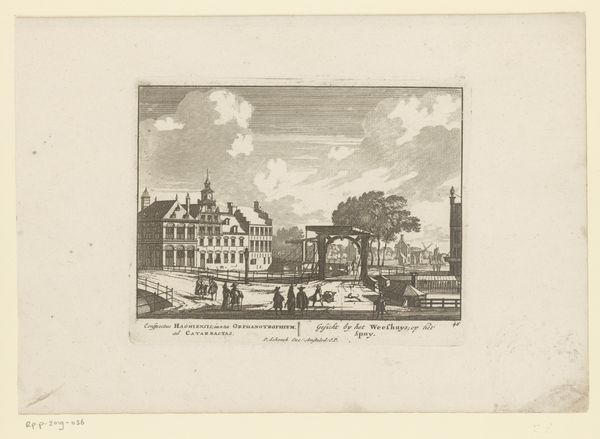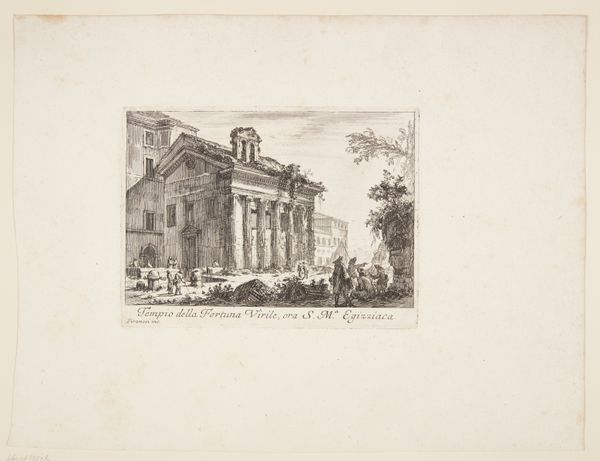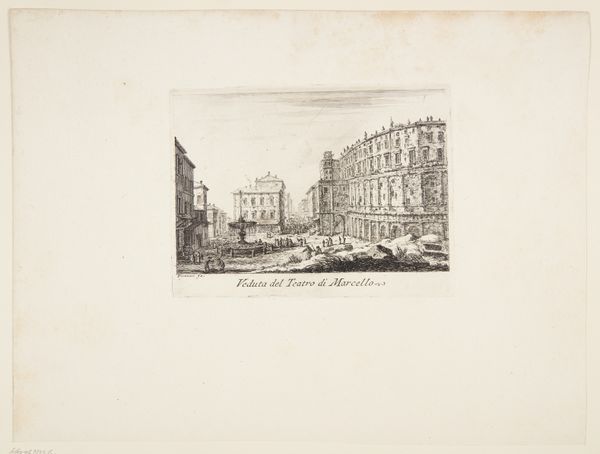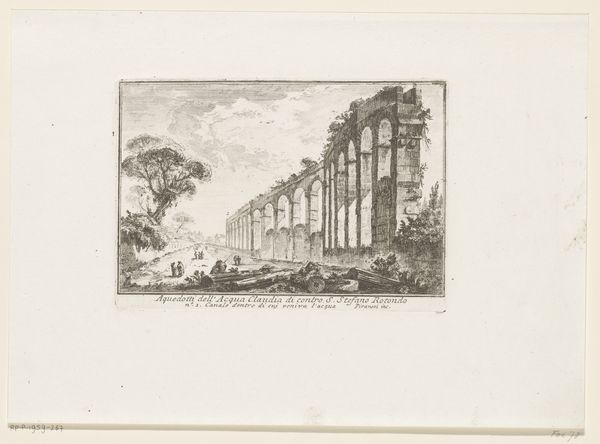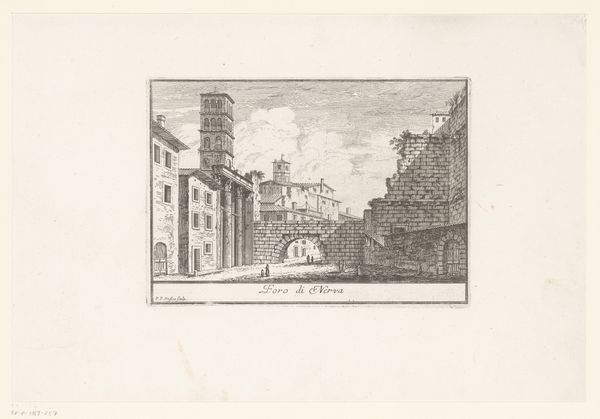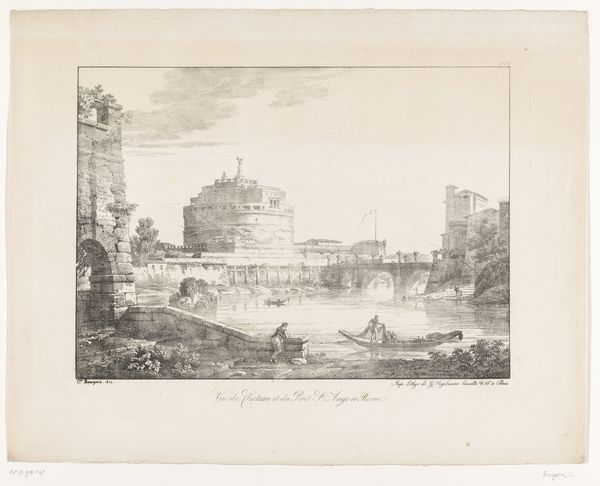
print, etching, engraving
#
baroque
# print
#
pen sketch
#
etching
#
old engraving style
#
landscape
#
cityscape
#
engraving
Dimensions: height 130 mm, width 184 mm
Copyright: Rijks Museum: Open Domain
Curator: Well, this etching, "Zicht op de haven van Ripa Grande in Rome," by Philothée François Duflos, made around 1748, pulls you in with its detail. There’s something captivating about these 18th-century cityscapes. Editor: Absolutely! The first thing that strikes me is the incredible busyness captured in such fine lines. It feels like a truly active, working port, teeming with life. Curator: Yes! I think what Duflos manages to convey is that baroque flair, a sense of dynamic energy and grandeur in what might otherwise be a simple waterside scene. The architecture along the waterfront and those dramatically inclined masts—they're all vying for attention, aren’t they? Editor: It’s interesting, isn’t it? How the etcher’s needle becomes a tool for embedding cultural narratives. Water has always been this space for reflection, the harbor becomes a place of transition, of goods traded, of cultural exchange... Notice, too, the plumes of smoke; there's this industrial revolution simmering. It brings a different feel of purpose and progress... Curator: It's a very charged perspective... that juxtaposition of elegance and grime. There's such detail in the foreground with figures near what almost appears as ruins... Then your eyes find this very precise neoclassical building as the anchor of this etching... Fascinating the way you pick up on those wisps of smoke too... Almost a premonition... Editor: In my opinion, Duflos uses a familiar artistic and symbolic technique—light and shadow. A bright skyline versus what amounts to charcoal in the foreground, like embers in this age of sail. The human figures along the margins symbolize both change and something deeper... perhaps a lingering feeling. Curator: Hmm. It’s almost as if Duflos anticipates modernity and wants to capture that specific tension in a fleeting view. Now, after reflecting more on the port, there is this somber sense of romantic ruin... that everything is constantly transforming into something new, or vanishing, really. Editor: Indeed. Perhaps every portrait of a port city then becomes a statement about time, memory, and about an industrial engine slowly churning history. Thanks for that observation. Curator: And thanks for pulling me deeper into Duflos’s vision; it made me reconsider the artist's mood...
Comments
No comments
Be the first to comment and join the conversation on the ultimate creative platform.
